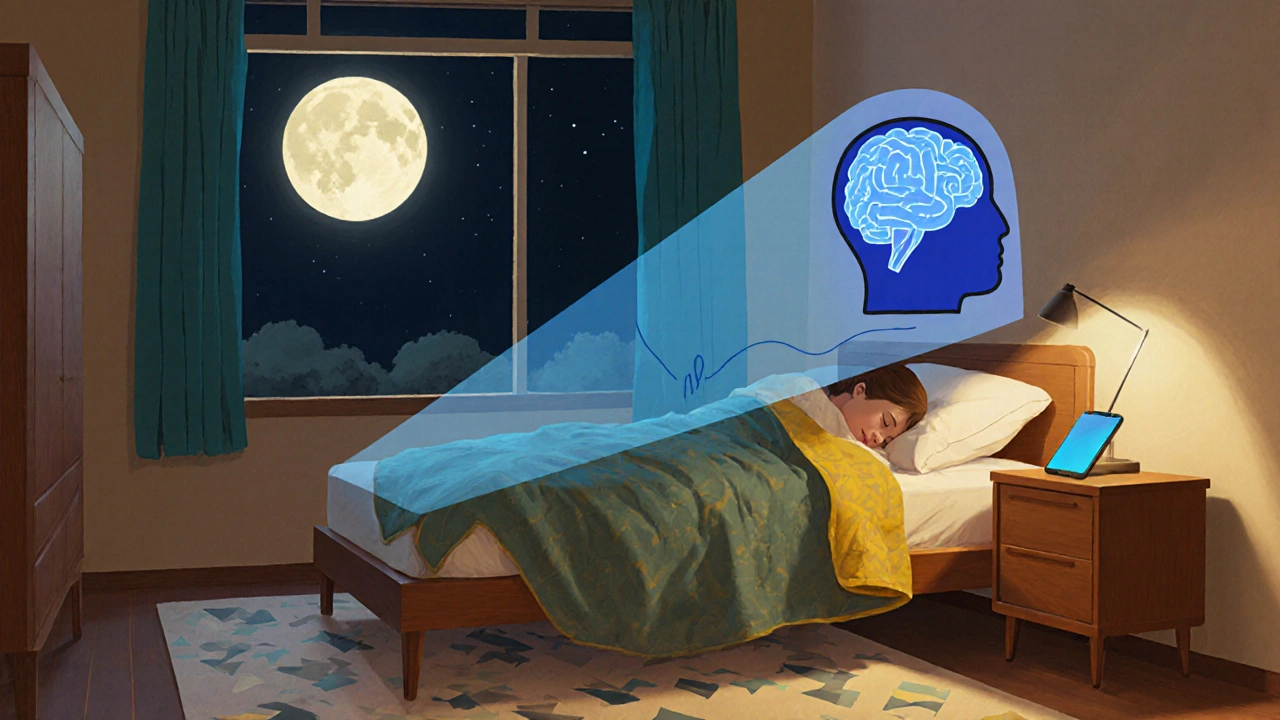Melatonin: What It Is, How It Works, and What You Need to Know
When your body’s natural sleep signal gets out of sync, melatonin, a hormone produced by the pineal gland that tells your brain it’s time to sleep. Also known as the sleep hormone, it’s not a sedative—it’s a cue. Think of it like a dimmer switch for your nervous system, slowly turning down alertness as darkness falls. Most people make enough melatonin on their own, but as we age, production drops. That’s why older adults often struggle to fall asleep or stay asleep.
It’s not just about aging. Shift work, jet lag, and screen-heavy evenings can all disrupt your circadian rhythm, your body’s 24-hour internal clock that controls when you feel awake or tired. This rhythm relies heavily on light and dark signals. Blue light from phones and laptops tricks your brain into thinking it’s still daytime, which suppresses melatonin. That’s why scrolling before bed makes falling asleep harder—even if you’re exhausted. And if your rhythm is off, melatonin supplements can help reset it. But they’re not magic pills. They work best when taken at the right time—usually 30 to 60 minutes before bed—and only when your schedule is stable enough to support a new sleep pattern.
People use melatonin for more than just trouble falling asleep. It’s commonly used for jet lag after long flights, especially when crossing multiple time zones. It’s also used by those with delayed sleep phase disorder, where they naturally fall asleep much later than normal. Some parents use it for children with autism or ADHD who struggle with sleep onset, though it should always be done under medical supervision. The science shows it’s generally safe for short-term use, but long-term effects aren’t fully understood. And unlike prescription sleep aids, melatonin doesn’t cause dependency or grogginess the next day—for most people.
But here’s the catch: not all melatonin supplements are created equal. Studies have found that some over-the-counter products contain way more or less than what’s listed on the label. That’s why it’s smart to look for third-party tested brands and start with the lowest dose—usually 0.5 to 1 mg. More isn’t better. In fact, high doses can make your body less sensitive to it over time.
And melatonin isn’t a fix for poor sleep hygiene, the habits and environment that affect how well you sleep. If you’re drinking coffee at 7 p.m., sleeping in a bright room, or tossing and turning for hours because your mind won’t shut off, no amount of melatonin will fix that. It’s a tool to help align your rhythm, not replace good habits. The best results come when you combine it with consistent sleep times, dim lighting at night, and avoiding screens before bed.
What you’ll find below are real, practical guides from people who’ve used melatonin—or helped others use it. From how it interacts with other meds, to why some people swear by it and others feel nothing, to what the latest research says about long-term use. No fluff. Just clear, tested advice on when it helps, when it doesn’t, and how to use it safely.

Understanding Melatonin: The Ultimate Guide to the Sleep Hormone
Learn how melatonin works as your body's natural sleep signal, when to use supplements, proper dosing, and how to reset your sleep cycle without relying on pills.
